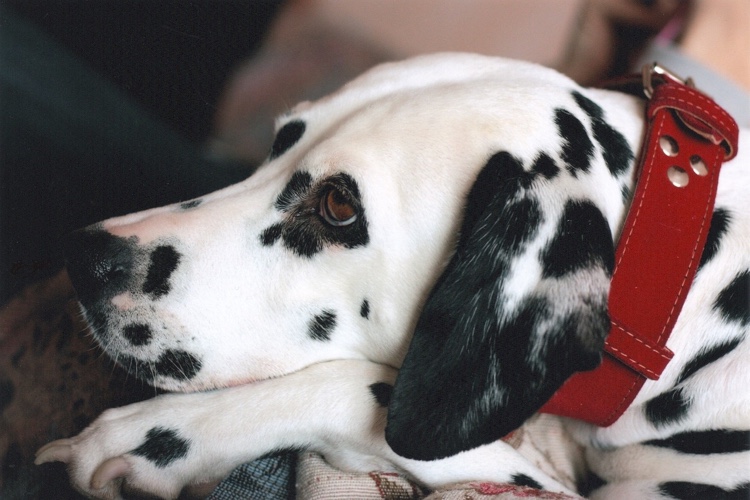All About Cavapoo
Cavapoos are playful and affectionate dogs that have never met a stranger—everyone is a friend in their eyes.
According to the Animal Cancer Foundation, roughly 6 million dogs and a similar number of cats are diagnosed with dog cancer each year. Early detection is key to beating the disease–and, with the same advanced treatments humans have to fight cancer available to dogs, their chances of making a full recovery are even better.
Give your veterinarian a call if your dog begins to show any of these symptoms:
Bad breath in dogs is common, but if it is worse than the typical case of bad dog breath it could signal a tumor. Tumors can also cause foul odors to waft from a dog’s nose or tail end.
It’s best to get any lump or bump examined by your veterinarian as soon as you find it. Lumps on dogs may just be a fatty tumor, wart, cyst, or an abscess caused by an insect bite, thorn, or other infection, but it’s wise to play it safe.
If your dog is shedding pounds and their diet and exercise routine have remained the same, an illness may be lurking.
Behavioral changes are a good indicator that your pooch isn’t feeling well. They may act more aggressive due to physical pain, lose their appetite, or become lethargic.
Some breeds are at greater risk for cancer than others. It’s always helpful to know what illnesses are common for your breed of dog so you can be on the lookout.

Often, a combination of treatments is used to battle dog cancer. These may include:
Surgery is usually performed to remove cancer that is more localized and in an early stage. The type of surgery performed depends on the kind of cancer and where it is. For example, if cancer cells are thought to have spread to a dog’s lymph nodes, the lymph nodes may be removed in addition to any tumors. In other cases, just the tumor and surrounding tissue that could have cancer cells will be removed.
Chemotherapeutic drugs are usually administered to dogs through a vein to kill cancer cells and prevent them from multiplying. Most dogs tolerate these drugs well, but they might experience some of the same side effects that people do from chemotherapy, like nausea, vomiting, lack of appetite, and diarrhea.
Radiation therapy involves the penetration of gamma rays in the area of the tumor as a means of killing cancer cells and preventing them from multiplying.
Radiation therapy will be painless for your pup, but they may experience skin irritation in the targeted area. An anti-itch medication might be prescribed to help, or they may be given a cone to wear in order to prevent further skin aggravation, which could be damaging.
Photodynamic therapy involves a drug called a photosensitizer and light waves. The drug is injected, and then the dog is exposed to the light. When a photosensitizer is exposed to light waves, it produces a form of oxygen that kills nearby cancer cells.
If your dog undergoes photodynamic therapy, they will likely be sensitive to the sun for a few weeks and can easily be sunburned. They may also shed dead skin from the treated area.
Cryosurgery is a freezing technique that has been proven most successful for removing oral tumors, tumors on the eyelid, tumors in the anal area, and other smaller external tumors.
A dog undergoing cryosurgery will first have the fur around the tumor shaved. The majority of the tumor will be removed to shorten the time that the tumor has to be frozen. Then, the remaining part of the tumor and some of the surrounding skin that may contain cancer cells will be frozen anywhere from 30 seconds up to a few minutes, depending on the size of the afflicted area.
Dogs may experience some mild discomfort following cryosurgery, like swollen or oozing skin, and the skin might be discolored. The treated area should scab over within a few days and heal naturally, but sometimes antibiotics are prescribed.
Canine bone marrow transplantation allows veterinary oncologists to treat lymphoma with the most aggressive chemotherapy.
Dogs can receive a bone marrow transplant in two ways: by receiving compatible stem cells from another dog or by having their own stem cells taken from their blood and put back into their body. Because there isn’t a national animal registry for stem cell donations, most dogs undergo the latter procedure, called autologous transplantation.
Dogs will need 10-14 days to recover after a bone marrow transplant. They must be constantly monitored so notice will be taken right away if there are any complications, though rare.
Your veterinarian may want to keep your dog hospitalized for the entire duration of the recovery process to ensure that their environment is sterile and that someone is on-hand at all times in case medical attention is required.
It’s important that dogs are kept in a clean environment during their recovery to lower the risk of viral or bacterial infection. Your veterinarian may want to keep your dog hospitalized for the entire duration of the recovery process to ensure that their environment is sterile and that someone is on-hand at all times in case medical attention is required.
Your veterinarian or a veterinary oncologist will assess the best treatment options for your dog and review them carefully with you. A dog insurance plan may help cover the cost of treatment. Find out what to ask before purchasing a plan.